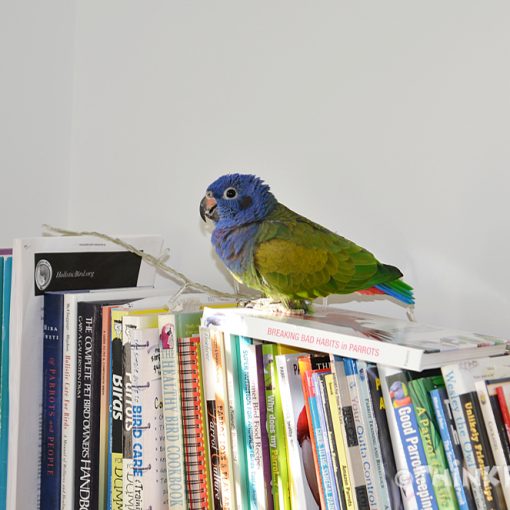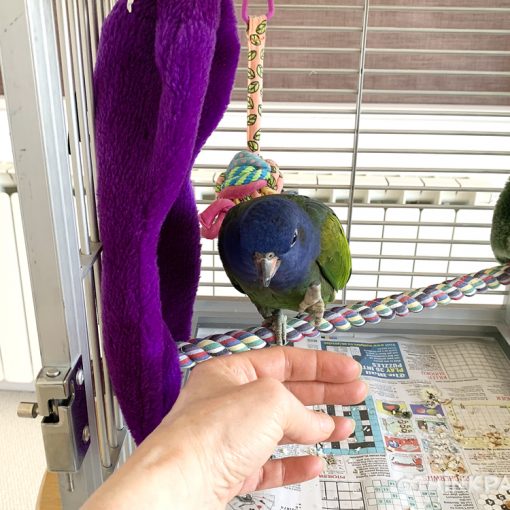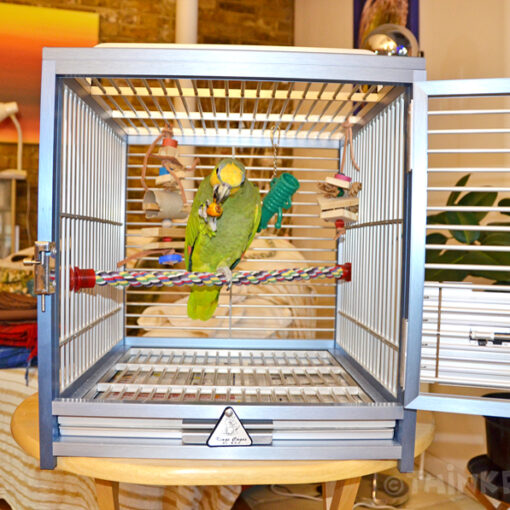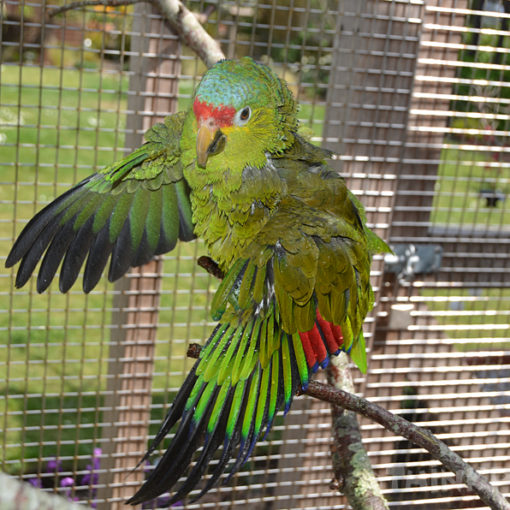Target training is teaching a parrot (or any other animal) to touch something (often the end of a chopstick) with a body part (usually the beak or feet) for a reinforcer (a treat works well).
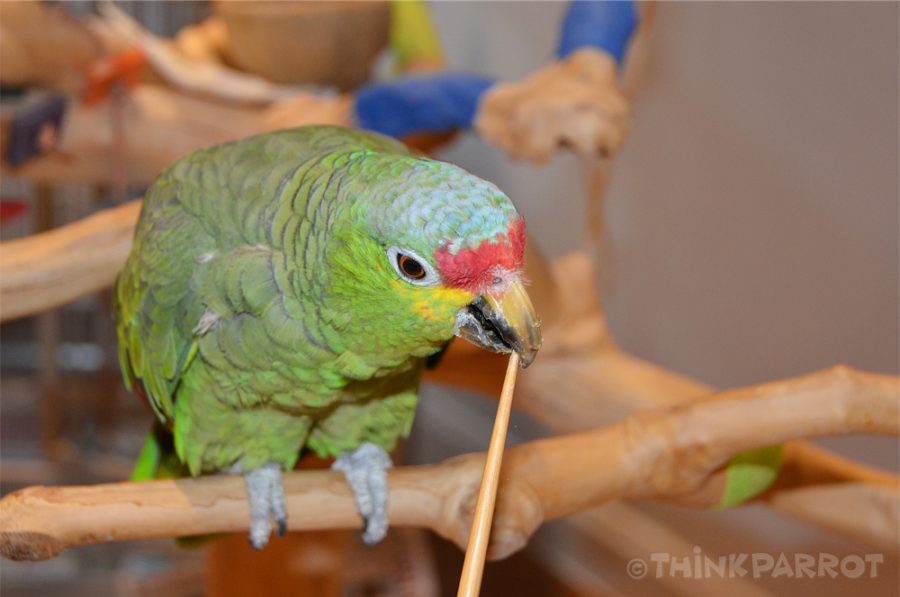
Targeting is a fantastic first behaviour to explore for both the parrot and the human. It teaches the human timing – the importance of fast delivery of the reinforcer so that the parrot learns contingency ie. that receiving reinforcement is directly related to the behaviour, or in other words, “IF I touch this stick THEN I get a treat”.
It can be taught inside or outside the cage. Inside the cage works well for a bird who is reluctant to leave the cage or hasn’t yet forged a trusting relationship with their human. The bars offer security and therefore more confidence for both the parrot and you. Targeting opens up a whole new way of communicating and is therefore also a fabulous exercise for a less favoured human to teach.
What is the point of targeting?
Targeting can be helpful to have the parrot move somewhere without touching him or her. Ask the parrot to target back into her cage, or target to the other side of her cage whilst you slot in a food bowl. Teach the parrot to target her foot to the cage bars to allow you to file/cut her nails. It can also be a useful aid in training a parrot to step up, by following the target onto your hand or perch.
Targeting is actually part of many behaviours we teach our parrots. Stationing is targeting the feet to a certain place. The step up is targeting the foot/feet to a hand, arm or perch. Recall is targeting the feet to your arm or other landing place. Even taking a treat from you is targeting the food in your fingers.
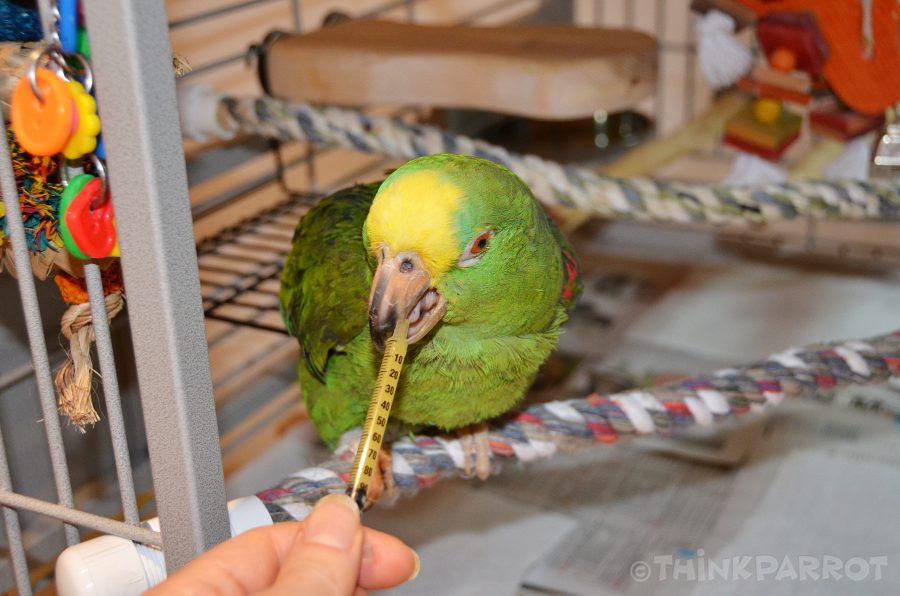
How do we teach targeting?
A parrot naturally uses her beak to explore the environment so it makes sense to have the bird touch a target with her beak. Choose something that doesn’t elicit a fear response. A short stick is an ideal. It could be a wooden chopstick, a lollipop stick, a short twig or even a toothpick for a tiny bird.
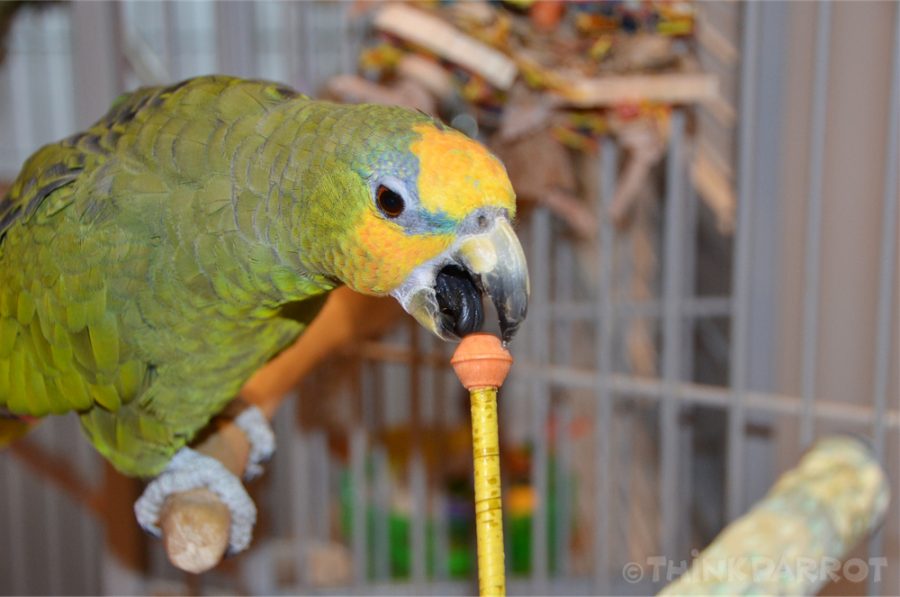
Shaping
A parrot won’t necessarily know what to do when you present them with the target, so you will have to SHAPE the behaviour. Shaping is reinforcing a series of tiny steps or approximations towards the final goal behaviour, ie. touching the target. Listed below from 1 – 6 are examples of the behaviours we might be looking to reinforce, and in brackets our response. Our parrot may skip a few of these steps or she might need them all and more.
Decide on what you are going to use as a reinforcer. A favourite treat is ideal, but an alternative reinforcer could be a head scratch or something else. Whatever works for your bird.
The goal behaviour is to touch the end of the stick with her beak. Each successful step/approximation is immediately reinforced with a treat:
Approximations:
1. Parrot looks at the stick (treat!)
2. Parrot turns towards the stick (treat!)
3. Parrot moves a step towards the stick (treat!)
4. Parrot moves two steps towards the stick (treat!)
5. Parrot moves right up to the stick (treat!)
6. Parrot touches the stick with beak (treat!)
Only the last behaviour in the chain of behaviours is reinforced ie. once the bird achieves steps 1 and 2, only step 2 is reinforced. Then once steps 1, 2 and 3 are completed only step 3 is reinforced, etc. The bird might move very quickly through the steps or he might get stuck on one, in which case we would go back to the last one he did correctly, and then work back up using smaller steps. Wherever we decide to end the training, we always end on a successful approximation. Only train in short bursts (a few minutes here and there through the day) and stop WAY BEFORE the parrot loses interest.
A “bolder” parrot may automatically go to bite the end of the presented stick – hard! REINFORCE! She has done exactly what you wanted. Gradually she’ll learn that just a light touch is sufficient to earn her treat.
Keep the target still
When the behaviour is fluent (ie. the parrot bites/touches the target every time it is presented) then you might offer the stick a little further away so that she has to reach to touch it. Reinforce! Then move it further away so that she has to move a pace to touch it. Reinforce! At this stage it is important to keep the stick still for each approximation. If you start moving the target too early the parrot might give up the behaviour and not bother at all – what’s the point when she can never catch it? Eventually the parrot will move quite a distance to target the stationary stick.
Moving target
Much later when the behaviour is fluent, then you can try having her follow a briefly moving target always with it just in front of her head and not too fast. By following a moving target you can teach other behaviours like turn circles. Add a cue (visible or verbal) then gradually fade out the target aid and have the bird turn circles using the cue only. And of course REINFORCE!!
Check out these great resources:
Dr Susan Friedman’s http://www.behaviorworks.org/index.html
Barbara Heidenreich’s http://www.goodbirdinc.com/
Lara Joseph’s https://www.theanimalbehaviorcenter.com/

